Here We Go,
I wrote this short piece on breathing because it’s one of the most common issues, and at the same time, one of the most underestimated, despite being absolutely critical and strategically vital.
In this article, I don’t just expose the problem. I offer real solutions.
Solutions that, in critical situations, could mean the difference between surviving… or falling.
Enjoy the read, and HAPPY EASTER TO ALL OF YOU!
APNEA, HYPERVENTILATION AND COGNITIVE COLLAPSE: THE TRUTH ABOUT BREATHING IN STRESS-DRIVEN PERFORMANCE
Breathing is not just a physiological process. It is a fundamental pillar of technical performance, especially during acute stress or high-intensity training.
The balance between oxygen (O₂) and carbon dioxide (CO₂) is crucial to maintaining the efficiency of both neuromotor and neurocognitive systems.
1. Hyperventilation and Unconscious Apnea
In high-stress situations or cognitively intense training, two dysfunctional respiratory patterns commonly emerge: hyperventilation and unconscious apnea.
Hyperventilation causes rapid, shallow breathing and excessive expulsion of CO₂ from the body, leading to a condition called hypocapnia. This is a critical event, because CO₂ is not just metabolic waste, it is a central modulator of blood pH and cerebral vasodilation.
When CO₂ levels drop too low, cerebral vasoconstriction occurs, restricting blood flow and oxygen delivery to the brain.
The consequences, especially for performance, are severe: slowed cognitive and motor responses, prolonged decision-making times, impaired processing of environmental stimuli, and increased perceived anxiety and impulsive reactivity.
All of this severely impacts clarity, technical precision, and neuromotor control, even in well-trained individuals.
Unconscious apnea, on the other hand, often arises under high emotional load or intense focus, where the individual unknowingly holds their breath. This triggers the opposite effect, excessive accumulation of CO₂ (hypercapnia).
In this case, the body enters a physiological alarm state. The brain interprets the CO₂ buildup as a threat. Consequences include increased sympathetic activation and adrenaline release, impaired fine motor control, poor timing execution, vagal tone dysregulation, degraded stress management, reduced neuromotor accuracy, and compromised stimulus discrimination.
Both conditions, hypocapnia and hypercapnia, are lethal interferences in high-performance environments, where every millisecond, every micro-movement, and every decision is critical.
2. The Importance of Nasal Breathing
Nasal breathing, with inhalation through the nose and exhalation through the mouth, is essential for optimal system function.
It filters and humidifies air, protects the respiratory tract, regulates CO₂ levels to maintain acid-base balance, and increases nitric oxide production, enhancing vasodilation and oxygenation at the tissue level.
This breathing mode supports neurophysiological stability, reduces sympathetic overdrive, and promotes calmness and cognitive clarity during physical and mental load.
3. Implications for Technical Performance
Dysfunctional breathing negatively impacts motor coordination, compromising technical execution.
It disrupts decision-making, slows reaction time, and hinders stress management, raising the likelihood of technical or cognitive error.
When there is no physiological stress, the data produced during training is often unreliable and not representative of an individual’s real capability.
Any outcome achieved without a measurable activation of the body’s response systems, especially under static conditions, is technically irrelevant.
4. Strategies to Optimize Breathing
To improve breathing during training and under stress conditions, it’s essential to:
. Practice structured breathing protocols, such as Box Breathing (inhale, hold, exhale, pause – all in equal durations)
. Train with progressive nasal breathing drills to increase CO₂ tolerance
. Actively monitor and correct unconscious hyperventilation or apnea patterns
. Apply the Three-Phase Tactical Breathing, consisting of: deep nasal inhalation, active hold (centering phase), and slow controlled exhalation. This technique stabilizes the nervous system and supports clarity during tactical decision-making
. Integrate the Biphasic Breathing 70–100, particularly useful during transitions between static and dynamic phases: a controlled inhale at 70% of lung capacity followed by a forced 100% exhale. Ideal for managing adrenaline spikes and preparing for reactive action
Conclusion
Breathing is a key component of technical performance.
Conscious and controlled breathing significantly enhances motor and cognitive capabilities, especially under stress.
He who controls his breath, controls the response. He who controls the response, remains in command.
I wrote this short piece on breathing because it’s one of the most common issues, and at the same time, one of the most underestimated, despite being absolutely critical and strategically vital.
In this article, I don’t just expose the problem. I offer real solutions.
Solutions that, in critical situations, could mean the difference between surviving… or falling.
Enjoy the read, and HAPPY EASTER TO ALL OF YOU!
APNEA, HYPERVENTILATION AND COGNITIVE COLLAPSE: THE TRUTH ABOUT BREATHING IN STRESS-DRIVEN PERFORMANCE
Breathing is not just a physiological process. It is a fundamental pillar of technical performance, especially during acute stress or high-intensity training.
The balance between oxygen (O₂) and carbon dioxide (CO₂) is crucial to maintaining the efficiency of both neuromotor and neurocognitive systems.
1. Hyperventilation and Unconscious Apnea
In high-stress situations or cognitively intense training, two dysfunctional respiratory patterns commonly emerge: hyperventilation and unconscious apnea.
Hyperventilation causes rapid, shallow breathing and excessive expulsion of CO₂ from the body, leading to a condition called hypocapnia. This is a critical event, because CO₂ is not just metabolic waste, it is a central modulator of blood pH and cerebral vasodilation.
When CO₂ levels drop too low, cerebral vasoconstriction occurs, restricting blood flow and oxygen delivery to the brain.
The consequences, especially for performance, are severe: slowed cognitive and motor responses, prolonged decision-making times, impaired processing of environmental stimuli, and increased perceived anxiety and impulsive reactivity.
All of this severely impacts clarity, technical precision, and neuromotor control, even in well-trained individuals.
Unconscious apnea, on the other hand, often arises under high emotional load or intense focus, where the individual unknowingly holds their breath. This triggers the opposite effect, excessive accumulation of CO₂ (hypercapnia).
In this case, the body enters a physiological alarm state. The brain interprets the CO₂ buildup as a threat. Consequences include increased sympathetic activation and adrenaline release, impaired fine motor control, poor timing execution, vagal tone dysregulation, degraded stress management, reduced neuromotor accuracy, and compromised stimulus discrimination.
Both conditions, hypocapnia and hypercapnia, are lethal interferences in high-performance environments, where every millisecond, every micro-movement, and every decision is critical.
2. The Importance of Nasal Breathing
Nasal breathing, with inhalation through the nose and exhalation through the mouth, is essential for optimal system function.
It filters and humidifies air, protects the respiratory tract, regulates CO₂ levels to maintain acid-base balance, and increases nitric oxide production, enhancing vasodilation and oxygenation at the tissue level.
This breathing mode supports neurophysiological stability, reduces sympathetic overdrive, and promotes calmness and cognitive clarity during physical and mental load.
3. Implications for Technical Performance
Dysfunctional breathing negatively impacts motor coordination, compromising technical execution.
It disrupts decision-making, slows reaction time, and hinders stress management, raising the likelihood of technical or cognitive error.
When there is no physiological stress, the data produced during training is often unreliable and not representative of an individual’s real capability.
Any outcome achieved without a measurable activation of the body’s response systems, especially under static conditions, is technically irrelevant.
4. Strategies to Optimize Breathing
To improve breathing during training and under stress conditions, it’s essential to:
. Practice structured breathing protocols, such as Box Breathing (inhale, hold, exhale, pause – all in equal durations)
. Train with progressive nasal breathing drills to increase CO₂ tolerance
. Actively monitor and correct unconscious hyperventilation or apnea patterns
. Apply the Three-Phase Tactical Breathing, consisting of: deep nasal inhalation, active hold (centering phase), and slow controlled exhalation. This technique stabilizes the nervous system and supports clarity during tactical decision-making
. Integrate the Biphasic Breathing 70–100, particularly useful during transitions between static and dynamic phases: a controlled inhale at 70% of lung capacity followed by a forced 100% exhale. Ideal for managing adrenaline spikes and preparing for reactive action
Conclusion
Breathing is a key component of technical performance.
Conscious and controlled breathing significantly enhances motor and cognitive capabilities, especially under stress.
He who controls his breath, controls the response. He who controls the response, remains in command.



